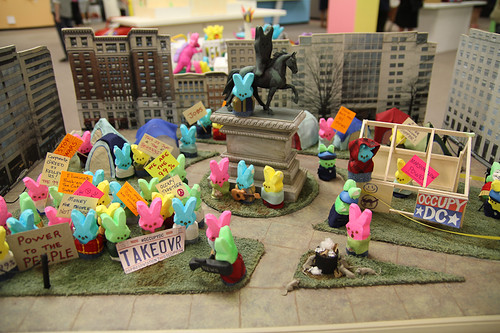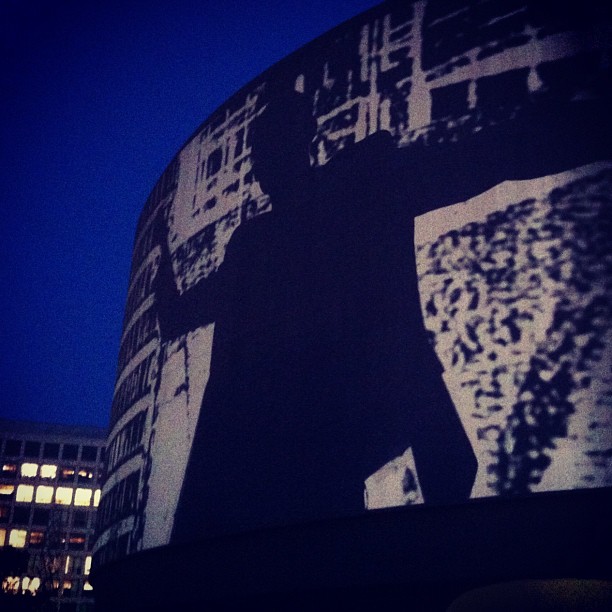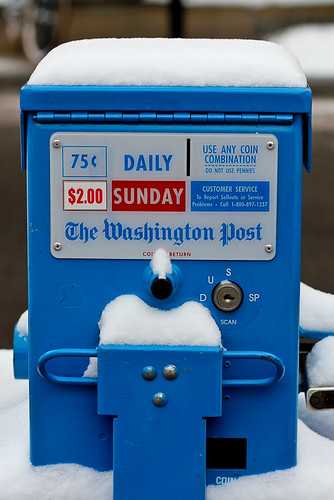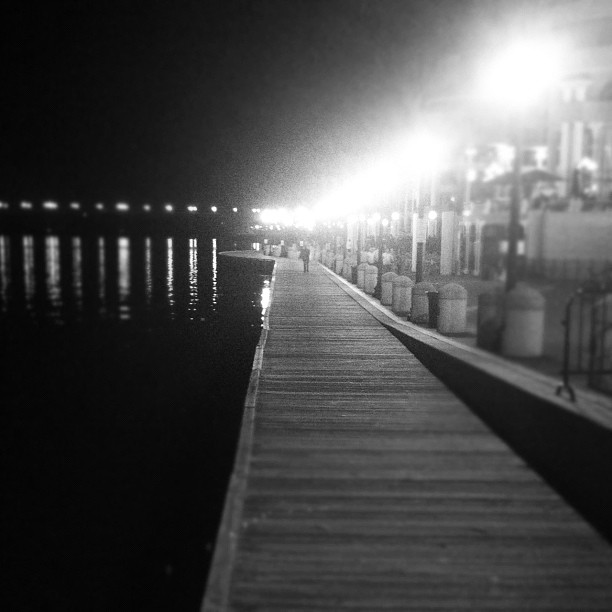 A scene from Tour de Fat, a celebration of bikes and beer sponsored by New Belgium. Taken with a Canon Rebel T2i – extra funkiness added with Snapseed, an iPad app.
A scene from Tour de Fat, a celebration of bikes and beer sponsored by New Belgium. Taken with a Canon Rebel T2i – extra funkiness added with Snapseed, an iPad app.
writer, photographer, web person from Washington, DC.
 A scene from Tour de Fat, a celebration of bikes and beer sponsored by New Belgium. Taken with a Canon Rebel T2i – extra funkiness added with Snapseed, an iPad app.
A scene from Tour de Fat, a celebration of bikes and beer sponsored by New Belgium. Taken with a Canon Rebel T2i – extra funkiness added with Snapseed, an iPad app.
 A movement that promised revolution is now reduced to globs of sugar. There’s something truly American about that. We’re not Europe, with class-based parties flooding the streets in protest. We distrust mass movements and frequently respond to strident appeals with mockery.
A movement that promised revolution is now reduced to globs of sugar. There’s something truly American about that. We’re not Europe, with class-based parties flooding the streets in protest. We distrust mass movements and frequently respond to strident appeals with mockery.
The Occupy movement made for good theater, but little more. That they find their end in Peep form is about right.
The Occupeeps are part of a whole series of Peeps dioramas on the ninth floor of Artomatic. Check ’em out!
 SONG1 has been extended at the Hirshhhorn Museum until May 20th. It’s a 360-degree video projection that wraps around the circular museum. And it’s quite beautiful at night.
SONG1 has been extended at the Hirshhhorn Museum until May 20th. It’s a 360-degree video projection that wraps around the circular museum. And it’s quite beautiful at night.
I was fortunate to be a judge for the short screenplay category of the American University Visions 2012 competition. As an AU grad and screenwriter, I was glad to help.
In past years, my fellow judges and I agonized over the decision-making process. This year, it was easy. We all agreed on one script.
That screenplay was Alpha by Christina Pamies. She wrote a thought-provoking science fiction script about alternate dimensions. In her story, people have found a way to travel from the “alpha” and “beta” worlds, encountering different and less perfect versions of themselves. Alternate Services is responsible for returning these “rogues” to their own dimension.

It’s hard to write a sci-fi story that you haven’t seen a hundred times before. Alpha kept my interest, especially as I realized that our world was the “beta” reality. Pamies did a great job at making this concept seem plausible and tragic.
One of the other judges described the script as “emotionally mature” which was an apt description. While the scenario was sci-fi, characters grappled with outlandish problems of identity and reality like actual people would. In other words, it’s believable, the most important test for science fiction.
See the rest of the winners of Visions 2012.
Also of note is Pretty All the Time by Annie Coburn, which won for Outstanding Narrative Production. This is a great script too – it won the 2009 DC Shorts Screenplay Competition – and now has begun its life as a short film on the festival circuit.
Washington Post, what happened to you? You’re the paper of Woodward and Bernstein, a beloved local institution and a veritable fourth branch of government.
Coming home after a Saturday night carousing, I used to love to see the trucks lined up outside your building on 15th Street. Back then (the 90s), the paper was printed right next to the Post’s HQ. Blue trucks would be double-parked along the street, waiting to deliver the news to the region.
And if I stayed out late enough, I could pick up the fat slab of Sunday’s paper while it was still technically Saturday night. There was a weird thrill to this, getting the news ahead of everyone else. The Sunday paper was an event, something everyone read.
This is all gone now. Where once stories were reported, fact-checked, edited and edited again before the presses rolled, news these days emerges in electronic form, often-rushed and incomplete. This is a good thing. I am for more news, more information, for the great cornucopia of the web. No more gatekeepers, let the public decide what matters.

But the Washington Post is an institution. It is a brand expressing journalistic quality and integrity. When they publish something, I expect it to be true.
I don’t expect the Washington Post to be running a digital sweatshop, where young journalists are expected to churn out regurgitated news items in the mad pursuit of impossible traffic goals.
How does this fit into the great tradition of the Post? The strength of the paper is its ability to really delve into issues. Why are they trying to be like some smarmy blog?
And getting a few hits on your site – what is that really winning you? Traffic rushes in to click on a link and then rushes off to some other site.
At the What’s Next DC conference, I watched Katharine Zaleski, the paper’s digital news director, give a presentation on the strategy. Coming from the Huffington Post, she brought a relentless focus on metrics. News was to be measured. And the measurement was site traffic. She had charts showing how traffic to the site had increased as the Post increased its “buzziness,” with efforts like news aggregation and blogging.
Does the Washington Post really want to emulate The Huffington Post? Do they want to “surf the trend waves on the Internet”? Shouldn’t the paper be making waves rather than trying to catch them?
And are ephemeral bursts of web traffic the right metric to follow? If so, why not just turn your site over to cat videos? But the Post is more than that, isn’t it?
Stay true to your mission – quality journalism. It’s what you do best. Stop trying to be cool. Don’t go for viral. Avoid “buzziness” and all its advocates.
Instead, simplify. Be the Apple of newspapers. Don’t add more web gimmickry to your cluttered and unusable web site. Focus on what you do best.
Don’t measure web hits – look at engagement. How long do people stay on the site? How many stories do they read? Try to duplicate the loyalty readers once felt toward the paper that they lovingly held in their hands. Better to have 100,000 devoted readers than a million casual followers.
No more second-rate social media. It’s beneath you, Washington Post. Simplify, focus on your strengths and pursue engagement with readers to be true to your news-breaking legacy.
 While the Supreme Court heard the Obamacare case, protests against the law were held outside. The media and demonstrators were careful not to get on the steps of the Court, which were under the protection of the Supreme Court Police.
While the Supreme Court heard the Obamacare case, protests against the law were held outside. The media and demonstrators were careful not to get on the steps of the Court, which were under the protection of the Supreme Court Police.
In 2007, Twitter leapt into geek consciousness at SXSW Interactive. Monitors had been placed in the halls of this tech conference, displaying what people were tweeting about. I thought it was an interesting curiosity, like watching telegrams in real time. Little bursts of text scrolled across the screen, as people shared opinions about the workshops that they were in.
Imagine, prior to this epochal event of just five years ago, we had no easy way of getting real-time information from our friends, unless of course we talked to them. And when we went to events, we were fully present, listening to speakers without constantly checking our electronic devices. We paid attention, more or less. Or nodded off. Or wandered away, in search of something more interesting, guided only by instinct. Continue reading “I Wish I Had Tweeted More: Confessions of a Social Media Skeptic”
 Photos can lie. This one certainly does. While it looks like a picture of a lonely and mysterious scene, the night was anything but. I stepped away from friends for a moment to snap this iPhone pic. To the right was a packed bar blaring pop music into the night.
Photos can lie. This one certainly does. While it looks like a picture of a lonely and mysterious scene, the night was anything but. I stepped away from friends for a moment to snap this iPhone pic. To the right was a packed bar blaring pop music into the night.
It’s an Instagram pic, using the Inkwell filter and the super-sexy radial focus tool. The focus is on the figure in the background and the rest is blurred out a bit, which I think adds to the mystery. The photo was also featured on DCist.
I’m quoted in this AOL Government article on citizen participation. The story makes the point that you can have a much bigger impact in your community than at the federal level.
I’ve seen that in DC (the city, not the metaphor), where local issues are frequently debated to death. For example, the ten-year long struggle over the redevelopment of the Wisconsin Avenue Giant. The plan to upgrade this grocery store was so contentious that it claimed the job of one local planning director and caused her successor to steer clear of the whole mess.
Which is why I’ve been so impressed by the District Department of Transportation (DDOT), as I mentioned in the article. They put a bike lane down the center of Pennsylvania Avenue, a project that benefits bikers (like me) and is a powerful example of including bikes in transportation plans. They also put in a protected bike lane down 15th St, a block from where I live. This was done in a matter of months, compared to morasses like the Wisconsin Avenue Giant. Continue reading “The Parks and Rec Effect”